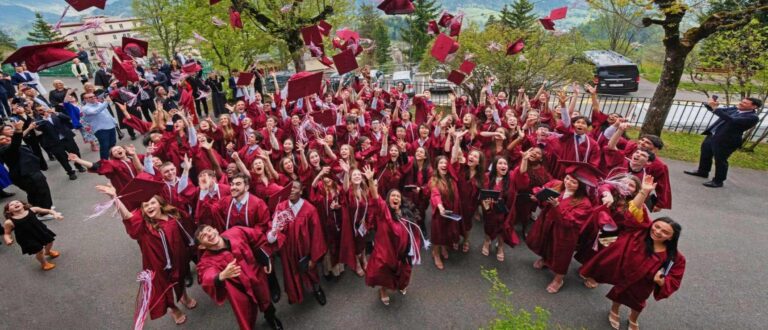“Every academic year, the hotly discussed topic of stick play comes up in the community of educators and parents of foundation age children,” says Clair Crean, Early Years Specialist at La Côte International School Aubonne. “Some parents and teachers fear sticks – they see the danger posed by this pointed object when swung over a child’s head or used as a weapon,” she explains. So, is it okay for preschool children to use sticks for play, or is it to be avoided?
Banning sticks means banning risky play, which is an essential part of child development, says Clair. “All children need to have opportunities to experience risky play, which allows them to develop the skills required to deal with nervousness and fear when trying new things. Playing with sticks falls into the category of playing with dangerous tools. Along with other types of risky play, such as playing at high heights, high speeds, and the rough-and-tumble, children can develop many critical skills, including physical competence and self-confidence. These skills enable them to adapt to new situations and environments – qualities that become even more important as they progress through school.
Another reason sticks receive bad press is because some adults believe using sticks as pretend weapons fosters violence in society.
‘We don’t play with guns here’ by child education expert Penny Holland looks at the origin and effect of restricting aggressive violent-themed play. Holland argues that children can learn to negotiate acceptable outcomes independently when adults do not control their developing understandings of war, aggression, peace, justice and citizenship.
As with any toys, children must first learn the rules to play with them safely, Clair adds. “In our role as the supervising adults, we engage the kids in a conversation that explains the dangers of carelessly using sticks and agree on ‘stick ground rules’ to use them safely. At LCIS, we teach our children these ‘stick manners’ as a rule of thumb: If it’s a short stick (as long as your arm), it may be lifted like a wand or sword, but if it’s longer, it must be pointed down like a walking stick or pulled like a dinosaur’s tail.”
“While running, hitting, and poking with sticks is never permitted, playing swordfights is okay if all participating children do so willingly,” Clair continues. “If children are taught to follow clear rules, and if they are encouraged to experiment with sticks under supervision at first, these amazingly versatile toys can lead to the most imaginative and exploratory play possible.”
So, what is so special about a stick?
Sticks are the ultimate ‘loose part’ whose purpose is ultimately decided and only limited by the child’s imagination. When children choose and use sticks for their play, they make some of same discoveries about physics and technology as our early ancestors did when they used sticks for different purposes. Clair adds: “When we observe children playing with sticks in our Early Years, we see that they are used in many ways, such as tapping, hitting, bumping, bending, breaking, pulling, stirring, dropping, floating, pushing, scratching, peeling, and stacking, throwing, balancing, twirling and rubbing. Few toys have such versatility.”
So let your child explore this gift from nature, but don’t forget to remind them to use their stick manners!
How to support ‘risky play’ at home
- Together with your child, explore the risks and dangers of a risky toy or game.
- Together with your child, agree on ground rules to safely engage in their activity.
- For stick play, agree on and remind your child to use their ‘stick manners’.







